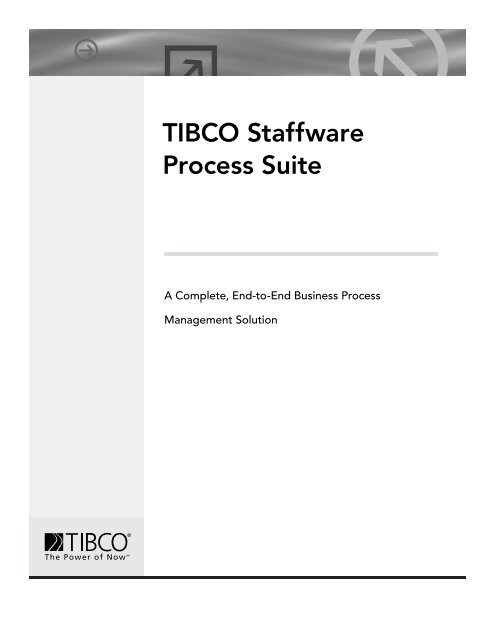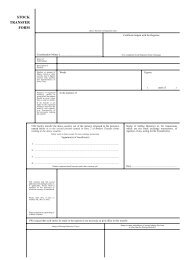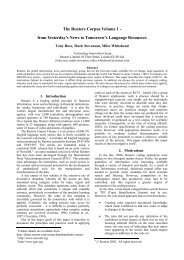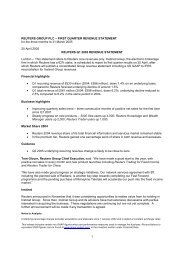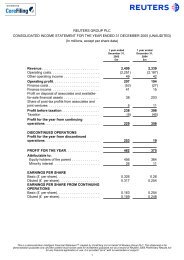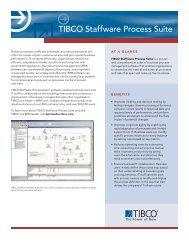TIBCO Staffware Process Suite
TIBCO Staffware Process Suite
TIBCO Staffware Process Suite
You also want an ePaper? Increase the reach of your titles
YUMPU automatically turns print PDFs into web optimized ePapers that Google loves.
<strong>TIBCO</strong> <strong>Staffware</strong><br />
<strong>Process</strong> <strong>Suite</strong><br />
A Complete, End-to-End Business <strong>Process</strong><br />
Management Solution
<strong>TIBCO</strong> <strong>Staffware</strong> <strong>Process</strong> <strong>Suite</strong> is a suite of application modules that has been designed<br />
to provide a complete end-to-end process management solution. Business processes are<br />
becoming increasingly important as organizations focus on how they deliver products<br />
and services to their customers. Organizations need the ability to adapt to changing<br />
conditions, and to manage their business in a flexible and dynamic manner. Business<br />
process management (BPM) provides an organization with this flexibility and much more.<br />
<strong>TIBCO</strong> <strong>Staffware</strong> <strong>Process</strong> <strong>Suite</strong> is one of the leading process management solutions in<br />
the industry with proven success. It enables your organization to join people and systems<br />
together, while delivering value to your business.<br />
This paper is an introduction to the need for such a solution, as well as the capabilities,<br />
functions and value of <strong>TIBCO</strong> <strong>Staffware</strong> <strong>Process</strong> <strong>Suite</strong>.<br />
Workflow vs. Business <strong>Process</strong> Management<br />
Business software has long been used to support key business processes – there is<br />
nothing new in this concept. What has changed, though, is the realization that one of the<br />
easiest ways for organizations to be competitive, manage costs, be viable, be flexible and<br />
responsive, is to understand and improve the structure and execution of their business<br />
processes. Through the deployment of process management software, organizations<br />
can meet those objectives. This view is globally recognized in both the public sector<br />
and in private enterprises around the world – many organizations now acknowledge that<br />
organizational processes hold the key to their successful future.<br />
The distinction between business process management (BPM) and workflow technology<br />
is what many experts in the industry have been debating in recent years. The debate has<br />
fueled the confusion that currently exists in the market. Most technologists and analysts<br />
know that the difference is a fine one – if indeed there is one at all.<br />
Workflow is concerned with the automation of procedures to achieve, or at least<br />
contribute to, an overall business goal, and it is generally limited to routing manual tasks<br />
from person to person. While workflow may be manually organized, in practice most<br />
workflow is organized in the overall context of IT systems.<br />
What this means is that a workflow management system is essentially a set of<br />
development tools that defines, manages and executes workflows through the operation<br />
of software, which is driven by a computer representation of the workflow logic. BPM has<br />
very similar dynamics at work but it works at a higher level of abstraction so that you can<br />
bring together business processes from multiple organizations and systems to form one<br />
T I B C O S ta f f w a r e P r o c e s s S u i t e
BPM is the only approach<br />
that has a track record<br />
of simultaneously<br />
bringing down<br />
operational costs and<br />
improving service quality.<br />
contiguous and manageable process. BPM software automatically manages the processes<br />
themselves, by accessing repositories, applications, and knowledge workers at the<br />
appropriate point in the business process. It automates not just the flow of documents,<br />
but also actions – such as extracting customer information or adding new information<br />
about a customer transaction, and then generating transactions in the multiple systems<br />
involved in the business process. BPM technology effectively tracks and orchestrates<br />
business processes regardless of who or what performs the business activities. BPM allows<br />
users to automate tasks involving information from multiple systems, with rules to define<br />
the sequence in which the tasks are performed, as well as responsibilities, conditions,<br />
and other aspects of the process. BPM not only allows a business process to be executed<br />
more efficiently, it also provides the tools to measure performance, identify opportunities<br />
for improvement, and easily make changes in the processes to act upon those<br />
opportunities. In addition to workflow management, BPM also brings to bear technologies<br />
such as enterprise application integration, business rules management, business activity<br />
monitoring, and process analytics so that organizations can have better visibility into their<br />
processes and manage operations more effectively.<br />
BPM allows the creation of a process layer that provides a level of process abstraction,<br />
and removes the processes from the control of applications. In the same way that<br />
middleware has provided an integration abstraction layer, BPM should provide a ‘process<br />
abstraction’ layer – called the independent process layer.<br />
With BPM, instead of having each application in charge of a set of processes, and<br />
subjugating adjacent applications to drive its processes, the control of the process is<br />
taken away from the individual applications, making them equal peers under the control<br />
of a BPM layer which is driving the processes, and which delegates tasks or activities to<br />
the individual applications according to their strengths.<br />
In order to do this well, BPM software needs to support all the attributes of a business<br />
process. For example, it needs to:<br />
• Manage applications in parallel as well as in series<br />
• Manage people-intensive applications both inside and outside the organization<br />
• Be continuous and discrete, and allow processes to change over time<br />
On the Agenda for CEOs and CIOs<br />
The need to improve business processes has long been on the agenda of senior<br />
executives. In challenging economic times, organizations focus on process efficiency to<br />
realize costs savings. In growing economic times, organizations focus on processes to<br />
T I B C O S ta f f w a r e P r o c e s s S u i t e
improve service and achieve a competitive advantage based on how they do business.<br />
One common theme is that rapid payback and quick return on investment (ROI) are crucial<br />
for any initiative.<br />
Organizations realize that they need to improve business controls, and provide quicker<br />
responses and service to customers. Concentrating on improving the effectiveness of the<br />
end-to-end process is the only proven way of achieving these objectives.<br />
You can improve service by spending more on people and systems to deliver a better<br />
quality of service. You can cut costs by reducing the number of people involved in the<br />
service delivery and trying to automate more tasks within the process of service delivery.<br />
These are two conflicting objectives and the CEO has to achieve both at once. Plus he<br />
or she needs to maintain tighter control and governance over how the organization<br />
functions. BPM is the only approach that has a track record of simultaneously bringing<br />
down operational costs and improving service quality, plus giving the business owner<br />
inherently better control over the organization.<br />
By implementing BPM, enterprises will be able to build and execute processes that are<br />
designed with customers in mind, which leads to higher quality services and products<br />
delivered faster and at a lower cost. Enterprises can retain competitive advantage by<br />
executing processes that support their business strategy and objectives. The CEO may<br />
not care about systems integration or the concepts of straight-through processing, but<br />
the CEO will likely care about monitoring how the business is performing, being able to<br />
react to changes in the market, handling exceptions quickly and effectively, and having a<br />
complete view of the organization.<br />
The CIO has the task of ensuring that the needs of the CEO are fully met – quickly,<br />
effectively and with zero disruption to the business. Systems implemented in today’s<br />
rapidly changing technology world must show ROI quickly and contribute to the bottom<br />
line without discarding what works.<br />
Providing technology that enables users to map out the business process in clear<br />
graphical notation is an important aspect of the technology, but it’s only part of the<br />
solution. The ability to execute that process, to facilitate simple integration with legacy<br />
systems and commercially available packages, and to monitor and analyze how those<br />
processes are executing, is a vital component to the complete solution. Furthermore,<br />
BPM as defined in this paper enables the CIO to implement new applications quickly<br />
and tie the front-office applications and the back-office systems together. This reduces<br />
maintenance costs and time-to-deploy and makes the IT function more responsive to<br />
business needs.<br />
T I B C O S ta f f w a r e P r o c e s s S u i t e
A Holistic View of Business <strong>Process</strong>es<br />
In today’s business environment of mergers and acquisitions, highly competitive markets,<br />
and increasing regulatory pressure, coupled with the widespread move to implement<br />
business initiatives that require a flexible IT infrastructure, organizations find it harder to<br />
justify spending on projects that are short term fixes. BPM solutions take a holistic view<br />
of an organization and how operations are run. In implementing a BPM solution, business<br />
processes are evaluated and analyzed in order to integrate people and applications for<br />
the tasks contained in these processes. BPM abstracts the processes from the applications<br />
and from the integration effort. In doing so, the complexity of integration is decreased,<br />
while overall manageability of the process is increased. This new layer effectively<br />
separates the control of the end-to-end business processes from the application layer and<br />
confers a supervisory role for the processes to manage the automated enterprise.<br />
As the BPM solution is implemented using a top-down, process-centric approach,<br />
every level of the organization gains a deeper and broader understanding of the way<br />
that business is conducted. BPM builds in an inherent flexibility to an organization’s<br />
infrastructure while leveraging the application-to-application connectivity provided by an<br />
integration platform.<br />
BPM and enterprise application integration (EAI) technology are very much<br />
complementary due to their different approaches. EAI uses a bottom-up approach that<br />
integrates the applications within the context of the business process. BPM typically<br />
uses a top-down approach that starts with defining and analyzing the business process<br />
and integrating the applications and people involved in that process. The combination<br />
of these two technologies can provide significant benefits to the business and to the<br />
IT side of an organization. The combination can provide an architecture that is open,<br />
application agnostic and can be modified quickly without any disruption to the underlying<br />
IT infrastructure. A true BPM solution ensures that your IT infrastructure is not a growthlimiting<br />
factor.<br />
The capabilities of a BPM solution include a number of related technologies, such as<br />
workflow, application integration, business-to-business connectivity, rules engines,<br />
process modeling, process analytics, and process clients. A true BPM solution will be<br />
more than simply the sum of these parts – a true BPM product will be able to function<br />
as the enterprise environment for the modeling, execution, analysis and continuous<br />
improvement of business processes. <strong>TIBCO</strong> <strong>Staffware</strong> <strong>Process</strong> <strong>Suite</strong> is a complete process<br />
management solution that enables organizations to maximize their IT investments while<br />
providing maximum flexibility and control to the business process owners.<br />
T I B C O S ta f f w a r e P r o c e s s S u i t e
Leveraging a Service-Oriented Architecture<br />
An effective BPM<br />
solution will leverage<br />
the concept and<br />
implementation of<br />
SOA, and ultimately the<br />
underlying applications.<br />
Every enterprise has its islands of corporate assets – whether that is the employees,<br />
suppliers, partners (and information about them) or existing IT infrastructure – which<br />
must be connected and then leveraged to achieve corporate objectives. One of the most<br />
efficient and effective methods to integrate applications is through a service-oriented<br />
architecture (SOA). An SOA is an approach to distributed computing that involves<br />
the creation and management of discrete services (e.g. check customer credit, create<br />
customer record) that can access the corporate assets and pieces of information with a<br />
common interface regardless of the location or technical makeup of the function or piece<br />
of data. These services are exposed and managed in a loosely coupled manner that<br />
is designed to maximize reuse, with a natural extension to using these services within<br />
business processes.<br />
The key to delivering improved business processes lies in harmonizing new processes<br />
and applications with existing infrastructures including existing technologies such as<br />
enterprise resource planning (ERP) and customer relationship management (CRM).<br />
An effective BPM solution will leverage the concept and implementation of SOA, and<br />
ultimately the underlying applications. Any solution must bring benefits to the bottom line<br />
without discarding what works. In fact, you can argue that any mature SOA will have to<br />
have a BPM layer in order to organize the execution of the various services available into<br />
a sensible process that meets some business goal. It’s not just that BPM can exploit an<br />
underlying SOA.<br />
Providing technology that enables users to map out the business process in clear<br />
graphical notation is important, but being able to execute that process; facilitating<br />
integration with legacy systems and commercially available packages; and then analyzing<br />
and managing how those processes are working together, is also vital. <strong>TIBCO</strong>’s unique<br />
independent process layer separates the business process logic from the application<br />
layer, making integration much smoother and infinitely scalable. <strong>TIBCO</strong> BusinessWorks is<br />
a leading integration platform that enables organizations to construct and manage their<br />
integration infrastructure. When <strong>TIBCO</strong> BusinessWorks and <strong>TIBCO</strong> <strong>Staffware</strong> <strong>Process</strong><br />
<strong>Suite</strong> are deployed together, organizations are able to maximize control of their business<br />
processes while seamlessly integrating those processes with the underlying applications<br />
and services within an SOA infrastructure.<br />
The combined approach of <strong>TIBCO</strong> <strong>Staffware</strong> <strong>Process</strong> <strong>Suite</strong> and <strong>TIBCO</strong> BusinessWorks<br />
under an SOA infrastructure reduces maintenance costs and time-to-deploy, and makes<br />
the IT function far more responsive to business needs. In the past, there has been much<br />
criticism of the time it takes for IT implementations to deliver any real benefits. Driven<br />
T I B C O S ta f f w a r e P r o c e s s S u i t e
y speed, <strong>TIBCO</strong>’s solution is an antidote to that problem. <strong>TIBCO</strong>’s independent process<br />
layer in an SOA infrastructure means that processes can be quickly and easily amended in<br />
response to changing requirements without altering the underlying IT infrastructure.<br />
The <strong>TIBCO</strong> <strong>Staffware</strong> <strong>Process</strong> <strong>Suite</strong> –<br />
Product Overview<br />
The <strong>TIBCO</strong> <strong>Staffware</strong> <strong>Process</strong> <strong>Suite</strong> is a multi-component suite of application modules<br />
that has been designed to provide a complete end-to-end BPM solution. <strong>TIBCO</strong> <strong>Staffware</strong><br />
<strong>Process</strong> <strong>Suite</strong> is built on an open architecture so that it can be seamlessly integrated into<br />
your existing IT infrastructure. The layered architecture builds increasing functionality,<br />
robustness and scalability for deploying an enterprise-wide solution that leverages your<br />
current IT investment. <strong>TIBCO</strong> <strong>Staffware</strong> <strong>Process</strong> <strong>Suite</strong> is designed to allow organizations to<br />
create an IT infrastructure that is based on business processes – your unique approach to<br />
how you do business. <strong>TIBCO</strong> <strong>Staffware</strong> <strong>Process</strong> <strong>Suite</strong> does not impose limits on how your<br />
enterprise integration solution will be implemented. By separating the application logic<br />
from the process layer, organizations can achieve flexibility and scalability with ease. <strong>TIBCO</strong><br />
<strong>Staffware</strong> <strong>Process</strong> <strong>Suite</strong> is made up of the following major components:<br />
• Modeling - <strong>TIBCO</strong> <strong>Staffware</strong> <strong>Process</strong> <strong>Suite</strong> allows non-IT staff and business<br />
specialists to model business processes through a user-friendly graphical modeling<br />
environment, with complete support for version control. The resulting process<br />
map is the guide to integrating people, processes and applications. With IT and<br />
non-IT staff working together to build the business process map, there is a deeper<br />
appreciation and understanding of how an organization works, which results in a<br />
more effective integrated solution.<br />
• Rules - <strong>TIBCO</strong> <strong>Staffware</strong> <strong>Process</strong> <strong>Suite</strong> provides an intuitive tool for business<br />
analysts to build decision automation into business processes. Using an easy to<br />
learn spreadsheet-like decision table metaphor users are able analyze, test and<br />
manage business rules.<br />
• Execution - <strong>TIBCO</strong> <strong>Staffware</strong> <strong>Process</strong> <strong>Suite</strong> is powered by the <strong>TIBCO</strong> i<strong>Process</strong> <br />
Engine. It is a powerful process management engine designed to meet the<br />
needs of organizations that need to handle extremely high-volume, missioncritical<br />
transactions across multiple servers while maintaining the integrity of<br />
individual transactions. <strong>TIBCO</strong> <strong>Staffware</strong> <strong>Process</strong> <strong>Suite</strong> provides dynamic process<br />
execution, which can orchestrate sub-procedures for handling both planned and<br />
unplanned (exception) steps in a process. <strong>TIBCO</strong> <strong>Staffware</strong> <strong>Process</strong> <strong>Suite</strong> also<br />
T I B C O S ta f f w a r e P r o c e s s S u i t e
enables comprehensive application integration capabilities through the <strong>TIBCO</strong><br />
BusinessWorks integration platform, or other third-party integration technologies.<br />
• Analysis - <strong>TIBCO</strong> <strong>Staffware</strong> <strong>Process</strong> <strong>Suite</strong> provides a sophisticated tool to<br />
analyze the effectiveness and efficiencies of entire business processes. It enables<br />
management to establish and continuously measure key performance indicators<br />
(KPIs) for ongoing process performance and improvement.<br />
<strong>TIBCO</strong> <strong>Staffware</strong> <strong>Process</strong> <strong>Suite</strong> and Dynamic <strong>Process</strong>ing<br />
<strong>TIBCO</strong>’s unique<br />
independent process<br />
layer separates the<br />
business process logic<br />
from the application<br />
layer, making integration<br />
much smoother and<br />
infinitely scalable.<br />
For most business processes, in addition to the recognized steps or activities that make up<br />
the process, there are a number of recognized exceptions that may occur along the way.<br />
At the same time, business processes contain a certain dynamic element that is driven by<br />
the inherent fluid nature of most processes. For example, in a loan application process, a<br />
recognized exception is that the applicant fails the credit check. The point in the process<br />
at which these types of exceptions may occur can be anticipated and can be built into the<br />
automated business process. At the time that exception is recognized, additional process<br />
steps may need to be added.<br />
On the other hand there are other types of exceptions that could occur at any point<br />
within the process. Examples of these types of exceptions are: a person gets married and<br />
changes name, a person dies, or notification is received that a loan application is being<br />
investigated for fraud. In some processes the number of identified exceptions may be<br />
numerous. Any attempt to build handling for such exceptions and dynamic processes<br />
into the process would result in a very large spaghetti-like process that would be almost<br />
impossible to enhance or maintain.<br />
The handling of these types of exceptions and dynamic processes may also vary. Some<br />
may need separate processes to be initiated, some may need the main process to be<br />
suspended while other activities take place, some may require process data to be modified<br />
to take into account changed circumstances, and others may indicate that the current state<br />
of the process needs to be changed.<br />
<strong>TIBCO</strong> <strong>Staffware</strong> <strong>Process</strong> <strong>Suite</strong> provides functionality to support these kinds of dynamic<br />
processes. In cases where continuing to work on the business process after an exception<br />
has occurred may invalidate the end result of the process, <strong>TIBCO</strong> <strong>Staffware</strong> <strong>Process</strong> <strong>Suite</strong><br />
allows the process to be suspended while the exception is being handled. Once the<br />
exception has been handled through external processing, then the original process can be<br />
reactivated or closed as appropriate.<br />
T I B C O S ta f f w a r e P r o c e s s S u i t e
The most complex situation is when the occurrence of an exception means that the current<br />
status of the process is invalid. For example:<br />
• The process should now be further advanced than it is – it needs to skip some steps.<br />
• The process should be less advanced than it is – it needs to undo some steps.<br />
• The process needs to be in a separate, possibly parallel, branch of the process.<br />
• The process needs to be repositioned in a specialized piece of<br />
exception-handling process.<br />
<strong>TIBCO</strong> <strong>Staffware</strong> <strong>Process</strong> <strong>Suite</strong> includes “Jump To Step” functionality that allows one or<br />
more outstanding steps to be withdrawn and a new set sent out. Since the status of the<br />
data at the point where the old steps were withdrawn may be different to that required by<br />
the new steps, the Jump To Step functionality allows case data to be updated as part of<br />
the operation.<br />
<strong>TIBCO</strong> <strong>Staffware</strong> <strong>Process</strong> <strong>Suite</strong> and Decision Automation<br />
Managing business processes across people-people, people-system, and system-system<br />
is <strong>TIBCO</strong> <strong>Staffware</strong> <strong>Process</strong> <strong>Suite</strong>’s core strength. Now business processes can be taken to<br />
the next level through decision automation enabled by <strong>TIBCO</strong> i<strong>Process</strong> Decisions, a fullfeatured<br />
business rules engine (BRE).<br />
An organization’s business policies guide and determine how every business transaction<br />
is handled. These business policies are expressed as a combination of detailed business<br />
tasks joined together by business processes. These business tasks include rules-based<br />
decisions such as:<br />
• For a motor vehicle claim, how much money should we reserve prior to paying for<br />
repairs, lawyers and medical bills<br />
• For a mortgage application, which mortgage products does the applicant qualify for<br />
and what income verification documentation must be supplied<br />
• For a cross-border securities trade, what are the taxes and fees<br />
• For a taxpayer, what tax forms package should be sent on the subsequent tax year<br />
• For a loan servicing event, which of the six different service centers acquired over<br />
the years should the event be sent to<br />
T I B C O S ta f f w a r e P r o c e s s S u i t e
These business rules are best organized into rule sets and invoked by the <strong>TIBCO</strong> i<strong>Process</strong><br />
Engine at the appropriate points in the process flow for the following reasons:<br />
• Further reduce transaction costs: By better automating complex decision-making<br />
tasks which currently require human intervention, significant savings can be<br />
achieved.<br />
• Eliminate errors: Automated rules ensure that best practices are applied to complex<br />
decisions consistently, significantly reducing errors and their consequences (e.g.<br />
poor customer service, improper billing, and compliance failures).<br />
• Greater flexibility: Separation of rules from the controlling process allows the rules<br />
to be changed independently from the process. This improves business agility,<br />
allowing the enterprise to react to changing business conditions or to quickly<br />
automate more of the exception cases.<br />
• Simplify the process: External rules can be used to reduce the number of steps<br />
required in the controlling process model by delegating the complexity of decisionmaking<br />
to the rules engine.<br />
• Further reduce the impact of personnel loss: By capturing “best practices” in a<br />
combination of rules and process definition, organizations can mitigate the risk of<br />
losing key individuals and retraining new staff.<br />
<strong>TIBCO</strong>’s i<strong>Process</strong> Decisions technology addresses all of the shortcomings presented by<br />
other business rules engine technologies when used in the context of a BPM solution:<br />
• Business rules can be modeled, analyzed and tested by business analysts using the<br />
same skill level as a good spreadsheet user. In fact, the spreadsheet-like, decision<br />
table interface can be learned in minutes.<br />
• Rule sets can be virtually guaranteed to be complete and unambiguous through<br />
automated rule analysis features.<br />
• Getting the rules right has historically been a problem involving lengthy test-debugfix<br />
cycles. Working within the spreadsheet-like user interface, <strong>TIBCO</strong> i<strong>Process</strong><br />
Decisions directly identifies conflicting rules, missing rules, and looping rules--even<br />
before proceeding to testing with test data.<br />
<strong>TIBCO</strong> i<strong>Process</strong> Engine leverages the up-front analysis of rules and generates the<br />
maximally efficient code set. Benchmark tests comparing <strong>TIBCO</strong> i<strong>Process</strong> Decisions to<br />
other rules engines show a dramatic difference in favor of <strong>TIBCO</strong> <strong>Staffware</strong> <strong>Process</strong> <strong>Suite</strong><br />
for BPM-size work documents. This performance complements <strong>TIBCO</strong> i<strong>Process</strong> Engine’s<br />
high scalability.<br />
T I B C O S ta f f w a r e P r o c e s s S u i t e 10
<strong>TIBCO</strong> <strong>Staffware</strong> <strong>Process</strong> <strong>Suite</strong> and Prediction<br />
The current business climate is very unpredictable, so organizations that can anticipate<br />
what will happen in the future are going to be better placed to compete than those that<br />
cannot. Through its unique prediction technology, the <strong>TIBCO</strong> <strong>Staffware</strong> <strong>Process</strong> <strong>Suite</strong><br />
helps organizations to forecast what will happen and when it will happen, within the<br />
context of a business process.<br />
One of the easiest ways<br />
for organizations to be<br />
competitive, manage<br />
costs, be viable, be<br />
flexible and responsive is<br />
to understand and<br />
improve the structure<br />
and execution of their<br />
business processes.<br />
For every live case, <strong>TIBCO</strong> <strong>Staffware</strong> <strong>Process</strong> <strong>Suite</strong> is able to forecast what steps are likely<br />
to require processing and when they are expected to occur. Applications and users alike<br />
can query the prediction data at any time to find out what work is expected in the future.<br />
Prediction uses the process definition and the existing case data to make as accurate a<br />
forecast as possible. The query interface is rich and flexible so that the information can be<br />
used for many different purposes.<br />
Within an organization these prediction capabilities can be used to forecast whether<br />
an individual, team or department has too heavy or light a workload. Based on this<br />
information decisions can be made about how the work is allocated or reallocated. In<br />
environments where missing deadlines can incur financial penalties, prediction can be<br />
used to forecast whether time-critical activities will be completed in time. If the prediction<br />
forecasts that some deadlines might be missed, then work could be reallocated to balance<br />
the load or could be used to calculate the expected risk.<br />
Prediction provides the necessary information for organizations to react to situations<br />
before they occur. In this way organizations are able to take advantage of forthcoming<br />
opportunities and to avoid anticipated problems. <strong>TIBCO</strong> i<strong>Process</strong> Analytics can help<br />
organizations analyze how efficiently processes have been running and where process<br />
improvement needs to be targeted. In addition to its work forecasting capabilities,<br />
prediction can be used to help optimize processes. When a process has been remodeled<br />
as part of process improvement or optimization, prediction can be used to simulate the<br />
running of cases in the remodeled process. To do this, instead of using the continuous<br />
prediction functionality described above, ‘On Demand’ prediction is used.<br />
‘On Demand’ prediction takes a specified process definition and uses simulation data<br />
rather than live case data, then generates a list of the expected work steps including<br />
their timings. This information can then be used to help determine whether the expected<br />
process improvements can be achieved.<br />
T I B C O S ta f f w a r e P r o c e s s S u i t e 11
Business Benefits of <strong>TIBCO</strong> <strong>Staffware</strong><br />
<strong>Process</strong> <strong>Suite</strong><br />
<strong>TIBCO</strong>’s BPM technology has been proven in over 15 years of use by organizations all over<br />
the world. <strong>TIBCO</strong> <strong>Staffware</strong> <strong>Process</strong> <strong>Suite</strong> provides significant business and IT benefits that<br />
include the following.<br />
Enhanced Business Flexibility<br />
If enterprises follow the old 80/20 rule, then it can be broadly stated that 80% of processes<br />
are fixed and can be readily automated. The remaining 20% are more dynamic and difficult<br />
to manage effectively. <strong>TIBCO</strong> <strong>Staffware</strong> <strong>Process</strong> <strong>Suite</strong> provides organizations with the<br />
ability to manage both fixed and dynamic processes. Referred to as exception earlier,<br />
these dynamic processes generally need to be handled in different ways – some may<br />
need separate processes invoked, and some may need the main process suspended,<br />
while others may require external process data. The <strong>TIBCO</strong> <strong>Staffware</strong> <strong>Process</strong> <strong>Suite</strong><br />
provides capabilities to address these situations and deliver greater business flexibility.<br />
Benefits include:<br />
• Greater visibility of the enterprise process map and early visibility of the process<br />
bottlenecks in order to proactively address problems as needed.<br />
• Improved productivity and reduced maintenance costs through reuse of processes<br />
and services, all contributing to greater efficiency.<br />
A More Complete Approach to Enterprise Integration<br />
Applications and IT assets are a critical part of business processes, and <strong>TIBCO</strong> <strong>Staffware</strong><br />
<strong>Process</strong> <strong>Suite</strong> leverages <strong>TIBCO</strong>’s integration technology, prepackaged adapters and Web<br />
services technology. <strong>TIBCO</strong>’s integration technology allows organizations to implement<br />
and manage service-oriented and event-driven architectures that are the foundation to<br />
achieve real-time business. Benefits include:<br />
• Potential for unlimited scalability and extensions to accommodate current and<br />
future strategic goals of the organization<br />
• Rapid development and deployment of new intra- and inter-enterprise processes<br />
by re-using existing processes and services<br />
• Reduce development and maintenance costs by decreasing reliance on costly<br />
specialist resources and encouraging re-use of existing processes and services<br />
• Rapid roll-out and support of new enterprise products and services, leading to<br />
reduced time-to-value and quicker realization of new or increased revenue streams<br />
T I B C O S ta f f w a r e P r o c e s s S u i t e 12
Enables Forward-Looking Planning<br />
Giving enterprises the ability to look into the future, and run hypothetical scenarios,<br />
will enable them to minimize not only the risks but also the cost of change. The latest<br />
prediction technologies in <strong>TIBCO</strong> <strong>Staffware</strong> <strong>Process</strong> <strong>Suite</strong> give organizations better<br />
planning capabilities.<br />
<strong>TIBCO</strong>’s independent<br />
process layer in an SOA<br />
infrastructure means that<br />
processes can be quickly<br />
and easily amended in<br />
response to changing<br />
requirements without<br />
altering the underlying<br />
IT infrastructure.<br />
What Makes the <strong>TIBCO</strong> <strong>Staffware</strong> <strong>Process</strong><br />
<strong>Suite</strong> Unique<br />
Recognizing the importance of people – People do business with people. In<br />
implementing the <strong>TIBCO</strong> <strong>Staffware</strong> <strong>Process</strong> <strong>Suite</strong> based on how you conduct business<br />
with your stakeholders, your people become inextricably linked to, and supported by,<br />
that platform.<br />
Recognizing the importance of processes – This design parameter is a natural extension<br />
of the previous one as it is people who design your business processes and it is people<br />
who execute your processes.<br />
Recognizing the importance of existing IT investments – A variety of other systems may<br />
be involved in any one business process. By supplying powerful integration capabilities,<br />
<strong>TIBCO</strong> <strong>Staffware</strong> <strong>Process</strong> <strong>Suite</strong> allows users to leverage existing IT systems rather than<br />
creating new systems.<br />
Ease of implementation – <strong>TIBCO</strong> <strong>Staffware</strong> <strong>Process</strong> <strong>Suite</strong> produces rich graphical output<br />
and the documentation provides a powerful implementation tool to guide your enterprise<br />
process integration effort.<br />
Scalability – The applications can be distributed across your network, and just as your<br />
process can be sub-divided to encompass additional business requirements, your process<br />
applications can be deployed within the context of these additional sub-processes.<br />
Proven success – <strong>TIBCO</strong> provides industry-leading products that have been implemented<br />
at over 800 customer sites. <strong>TIBCO</strong> has been providing business process management<br />
products and technologies for more than 15 years, and has demonstrated success<br />
across industries.<br />
<strong>TIBCO</strong> offers a solution that can join your systems and people together in one business<br />
process. Add to that 24/7 processing and transactionality that operate under a highly<br />
scalable architecture, which allows <strong>TIBCO</strong> <strong>Staffware</strong> <strong>Process</strong> <strong>Suite</strong> to lead the market today.<br />
T I B C O S ta f f w a r e P r o c e s s S u i t e 13
Summary<br />
The <strong>TIBCO</strong> <strong>Staffware</strong> <strong>Process</strong> <strong>Suite</strong> provides a complete set of tools to create, transform<br />
and streamline the internal and external processes and tasks of an organization. <strong>TIBCO</strong><br />
enables the creation of an independent process layer that separates processes from<br />
the underlying IT and data environment, facilitating the rapid development and change<br />
to an organization’s process. <strong>TIBCO</strong> <strong>Staffware</strong> <strong>Process</strong> <strong>Suite</strong> is an open and standardsbased<br />
solution that ensures seamless integration and full interoperability with existing IT<br />
infrastructures and applications.<br />
Global Headquarters<br />
3303 Hillview Avenue<br />
Palo Alto, CA 94304<br />
Tel: +1 650-846-1000<br />
Toll Free: 1 800-420-8450<br />
Fax: +1 650-846-1005 www.tibco.com<br />
©2006, <strong>TIBCO</strong> Software Inc. All rights reserved. <strong>TIBCO</strong> Software Inc. All rights reserved. <strong>TIBCO</strong>, the <strong>TIBCO</strong> logo, The Power of Now, <strong>TIBCO</strong> Software, <strong>TIBCO</strong> <strong>Staffware</strong> <strong>Process</strong> <strong>Suite</strong>, <strong>TIBCO</strong> BusinessWorks and <strong>TIBCO</strong> i<strong>Process</strong><br />
are trademarks or registered trademarks of <strong>TIBCO</strong> Software Inc. in the United States and/or other countries All other product and company names and marks mentioned in this document are the property of their respective<br />
owners and are mentioned for identification purposes only. 01/06


